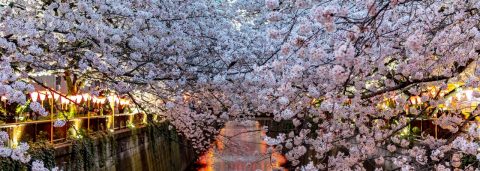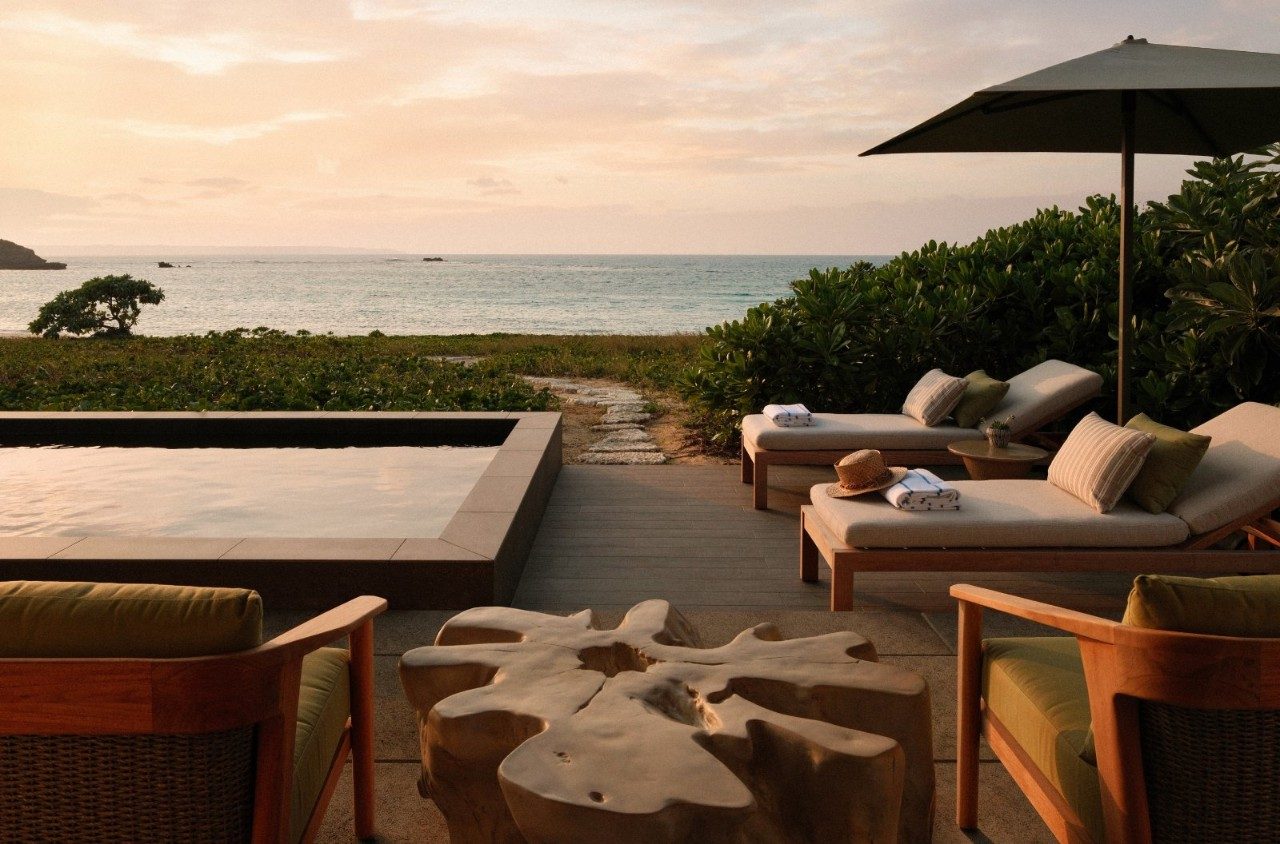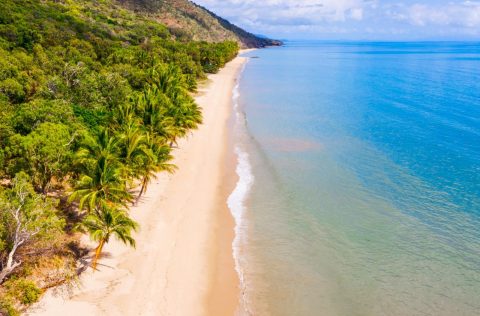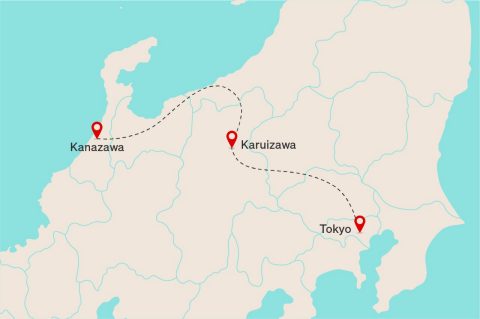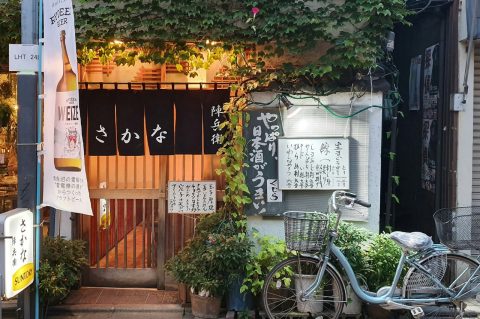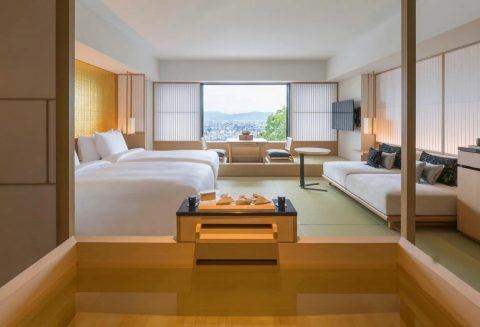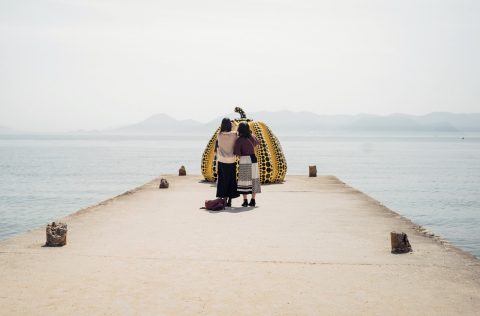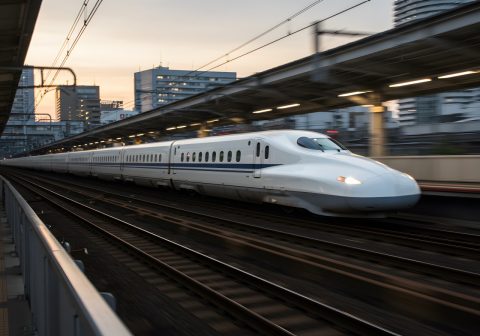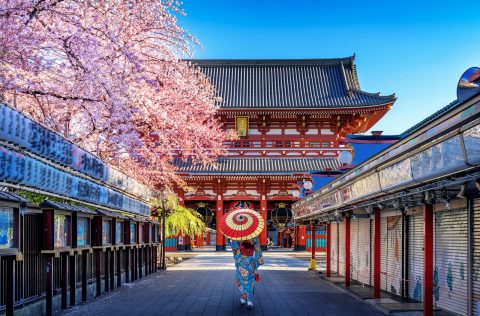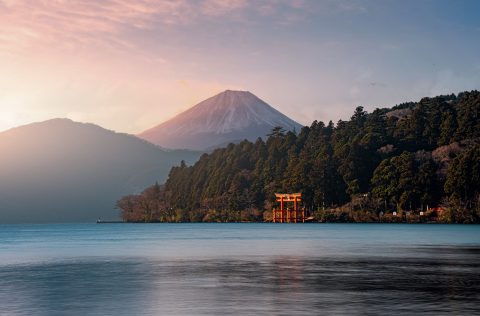24 of the Best Things to Do in Japan
Where should you start when planning a trip to Japan? Whizzing past Mount Fuji on a shinkansen train may be at the top of the bucket list, alongside soaking in a steamy hot spring, taking a deep dive into onsen culture or visiting a fairytale theme park. But there are also immersive hikes, incredible food and transformative traditional experiences such as tea ceremonies or sumo matches to consider. Start here with our list of the best things to do in Japan and build your ideal itinerary, whether it’s your first or 15th time in this magical country.
Cleanse your spirit in Hakone
1/25Takigyo is the ancient Buddhist and Shinto ritual of waterfall meditation. At Yuhi-no-Taki Falls in the mountains near Hakone, less than two hours by express train from Tokyo, participants dress in white robes to symbolise purity, say a prayer and then step under the pounding, ice-cold water – a practice said to purify the soul and strengthen the spirit. A local guide leads the ritual, offering instruction and support throughout. Framed by the forested beauty of Fuji-Hakone-Izu National Park (above), it’s an intense, elemental experience that brings you face-to-face with the raw power of nature, offering a cleansing unlike any spa treatment.
Plan your trip: The takigyo experience can be done in the morning, making it an ideal stop on the way to the much warmer, sybaritic bathing ritual of Hakone’s famous hot springs.
Learn the art of the samurai in Nikko
2/25In the forests of Nikko, two hours by train north of Tokyo, you can channel your inner warrior with yabusame (horseback archery) or kyudo (archery on foot), taught by instructors from the 12th-century Ogasawara school. The lessons take place at the stables that house the sacred horses of the Nikko Toshogu Shrine (above). If archery isn’t for you, a class in samurai etiquette will have you sitting, walking and drinking tea with powerful dignity.
Walk this way: This year marks the 400th anniversary of the Suginamiki Kaido, the world’s longest cedar-lined avenue, leading to Nikko Toshogu Shrine. Much of the road is now closed to traffic so you can follow in the footsteps of feudal lords.
Image credit: Alamy
Experience Indigenous Ainu culture in Hokkaido
3/25At Lake Akan in eastern Hokkaido, visitors can experience the traditions of northern Japan’s Indigenous Ainu people, whose connection to nature and reverence for the spirit world stretches back centuries. At the lakeside Akanko Ainu Kotan village (above), you can see Ainu wood carvers and embroiderers at work and hear ancient stories at Kamuy Lumina, a night-time forest walk enhanced with sound and light projections. An hour south of Sapporo, Upopoy National Ainu Museum and Park offers deeper insight into Ainu history and culture, through hands-on experiences involving music, art and storytelling.
Taste the region: Try ruibe, a take on sashimi served throughout Hokkaido. Said to come from the Ainu practice of burying salmon in the snow to preserve it, this frozen delicacy melts on the tongue.
Visit the great kitchen of Kanazawa
4/25In Kanazawa, a historic hub on Japan’s western coast, the covered alleys of Omicho Market echo with the cheerful cries of vendors announcing the day’s catch. For more than 300 years, this bustling market has fed the city, with nearly 200 stalls and eateries offering everything from kaisendon sashimi bowls and scoops of fresh sea urchin served in the shell, to Noto beef sushi sprinkled with gold leaf, a decoration Kanazawa is famous for. After feasting, explore the area’s other many treasures: the walled laneways and historic homes of the Nagamachi samurai district near the city centre and the gold-leaf ateliers and tea houses of the Higashi Chaya District (above) on the east side of the Asano River. It has the elegance of Kyoto only by the sea.
Get there early: Most of the stalls in Omicho Market start trading at around 9am but some restaurants open a couple of hours earlier so you can breakfast on sushi before exploring.
Explore the poetry of the north
5/25More than three centuries ago, the poet Matsuo Basho spent five months walking across northern Japan, capturing its beauty in haiku. Thanks to the country’s efficient rail network, you can now follow his path in about five days, taking the train between scenic spots along this timeless route, hiking forest trails and soaking in tranquil onsen towns along the way. Start in Sendai, two hours north of Tokyo, before hopping on a train to visit the pine-fringed islets of Matsushima Bay. Then head north to Hiraizumi’s Chusonji Temple (above) to see the golden Konjikido hall in a cedar grove and climb 1000 stone steps to Yamadera, a temple complex among the clouds.
Consider your options: For easy connections, the JR East Pass (Tohoku area) covers rail and some bus travel in the area but if you’d rather go by foot, companies such as Walk Japan offer guided and self-guided walking tours that take care of hotel bookings and provide detailed directions.
Image credit: Yobab/Adobestock
Rediscover your inner child in Kyoto and Osaka
6/25Gamers and nostalgics alike can immerse themselves in the 8-bit world at the new Nintendo Museum in Kyoto, which opened at the end of last year. Located in the tea town of Uji, the museum offers interactive exhibits and celebrates Nintendo’s journey from 19th-century playing card maker to global gaming giant. Stay nearby at Marufukuro, the stylish hotel on the site of Nintendo’s former headquarters. For the full deal, also head to Super Nintendo World at Universal Studios Japan (above) in Osaka, where the brand-new Donkey Kong Country zone is like stepping straight into a game.
Book ahead: Super Nintendo World is recommended for kids aged three and up (and nostalgic adults) and usually requires a timed booking. Although you can get tickets at the park on the day, it’s wise to buy them online in advance to avoid missing out.
Image credit: Akio Mic/Adobestock
Find a new reason to visit Naoshima Island
7/25Already famous for its art-filled landscapes, Naoshima has just welcomed the Naoshima New Museum of Art, part of the Benesse Art Site, designed by Tadao Ando. The opening coincides with the Setouchi Triennale, which holds sessions three times a year. Spread across 17 islands and coastal areas, the festival celebrates the link between art, community and the sea. Stay overnight to wander Naoshima’s quiet beaches and villages and you might stumble upon installations like Yayoi Kusama’s giant spotty pumpkin (reinstated after it was swept away by a typhoon in 2021). Hotels such as Benesse House book up quickly or try Naoshima Ryokan Roka, with just 11 stylish suites.
Take it easy: Some sites are quite far apart and buses can be infrequent. Pre-book an e-bike and pick it up at the island’s ferry port for the most convenient way to get around.
Head for the mountains in Gunma
8/25An hour north of Tokyo via bullet train, ancient mountains and contemporary art meet in quietly inspiring ways. From September to October, the Nakanojo Biennale transforms the Gunma countryside into a living gallery, with works by more than 100 artists filling former bathhouses, classrooms and houses in the hamlet of Nakanojo. The city of Maebashi is an ideal base. Stay at the Shiroiya Hotel, a 28-room boutique retreat designed by renowned architect Sou Fujimoto, where modern art, striking architecture and refined cuisine come together. Just outside the city, Hara Museum ARC showcases works by artists such as Yoshitomo Nara and Andy Warhol amid a landscape of gentle hills.
Try your hand: For hands-on experiences, the artisan village of Takumi no Sato, less than an hour’s drive from the hotel, offers drop-in workshops from paper making to indigo dyeing, set among apple orchards and rice fields.
Image credit: Alamy
Brew your own sake in Nagano
9/25In Saku (above), a historic brewing town in Nagano Prefecture, travellers can live the life of a sake brewer at Kurabito Stay. Sleep on futons in one of the eight simple rooms in the converted former brewers’ quarters and spend your day steaming rice, cultivating koji rice mould and tending to fermentation tanks under the guidance of experts at Kitsukura Shuzo brewery. After your experience, explore the scenic countryside of Saku – once a stop along the centuries-old Nakasendo Road connecting Edo (Tokyo) to Kyoto – by foot or on an e-bike. Ride through peaceful rice fields and discover some of the town’s 12 other breweries, each offering its own distinctive flavour.
While you’re there: Nagano is famous for its soba (buckwheat noodles). Kurabito Stay can help you book a soba-making experience at Teuchi Dokoro Tomosen, a specialist soba restaurant just a short walk from your accommodation.
Stay above it all in Tokyo
10/25It’s even easier to find a room with a view – and a world-class spa or two – following a wave of openings and one iconic comeback to Tokyo’s hotel scene. This month, Fairmont Tokyo debuts on Tokyo Bay with 217 rooms, five restaurants, an infinity pool and a spa. October brings the new JW Marriott Hotel Tokyo in Takanawa Gateway City, featuring 200 rooms and the intriguing promise of a croissant bar. Also in October, the Park Hyatt Tokyo – immortalised in the movie Lost in Translation – will reopen after extensive renovations.
Choose your timing: Events and holidays can drive up hotel prices, especially during Golden Week (late April), Silver Week (September) and cherry blossom season (late March to May). To see Tokyo in bloom without crowds, visit in mid-February when the parks are filled with plum blossoms.
Soak (and see the sights) in an onsen town
11/25Kinosaki Onsen, just a few hours by train from Osaka, is one of Japan’s most picturesque and historic hot-spring towns. Famous for its seven tattoo-friendly public bathhouses (many onsen do not allow entry to those with ink), the town's charming canal-lined streets brim with visitors wearing cotton yukata robes, trying different onsen and snacking on rice crackers made with carbonated spring water. It’s a beautiful blend of tradition and relaxation, ideal for both first-timers and seasoned onsen lovers alike.
Belt out a tune at karaoke
12/25In Japan, karaoke is more than just a pastime – it’s a cultural phenomenon. People go to karaoke to celebrate, to cap off a night out or simply to relieve stress after a day at the office. In Tokyo, you can channel your inner movie star at the iconic Karaoke Kan in Shibuya, the setting of the famous singing scene in Lost in Translation. (For the full movie experience, book room 601 or 602, where the crew filmed.) Want to pair karaoke with sightseeing? Try singing your heart out on a ferris wheel in Tokyo Dome City, where all gondolas have a karaoke machine – just choose your songs carefully, as a full revolution takes only 15 minutes or about four songs’ worth of time.
Image credit: A Certain Aesthetic - stock.adob
Experience a traditional tea ceremony
13/25Enjoy a peaceful pause in your travels to admire the quiet beauty of Japanese culture with a traditional tea ceremony. Learn the rituals of matcha preparation from expert hosts, taste seasonal wagashi sweets and even dress in a kimono for the full experience. At Camellia Tea Ceremony in Kyoto, you can experience the art of tea with English instruction. The ceremony reflects centuries of aesthetic philosophy, emphasising grace, mindfulness and simplicity.
Image credit: Alamy Stock Photo
Eat your fill of authentic ramen
14/25For ramen lovers, the Shin-Yokohama Ramen Museum in Yokohama is a must-visit. Part museum and part retro theme park, it recreates a late 1950s Tokyo streetscape and serves up regional ramen from all over Japan. Wander the nostalgic alleys, opt for half-sized bowls so you can sample a variety of flavours, learn the dish’s history and take a ramen-making class. It’s a fun and delicious way to deepen your appreciation of one of the country’s favourite comfort foods.
Image credit: vichie81 - stock.adobe.com
Stay in a fairytale village
15/25Tucked deep in the Northern Alps, winter in the picturesque villages of Shirakawa-go in Gifu and Ainokura in neighbouring Toyama look like scenes from a snow globe. These traditional mountain hamlets are renowned for their gassho-zukuri farmhouses with steeply thatched roofs designed to withstand heavy snowfall. Many of the homes are more than 250 years old and some welcome guests for overnight stays; try Ainokura ryokans, where structures date back to the 17th century.
Image credit: N/ymzk - stock.adobe.com
See the sumo
16/25Japan’s national sport of sumo wrestling is steeped in ritual and drama. You can catch professional tournaments in Tokyo, Osaka, Nagoya and Fukuoka throughout the year – book tickets online, a few months in advance. For a close-up experience, visit a sumo stable to see the morning practice. At Arashiobeya in eastern Tokyo, you can watch for free from the street through large windows or from inside with an official tour. In Osaka, pair an exhibition match with a dinner of hearty sumo dishes at Ochiizumi, an eatery run by a former champion wrestler.
Image credit: Peter Adams - stock.adobe.com
Stroll through the seasons
17/25Along with Koraku-en in Okayama and Kairaku-en in Ibaraki, Kenroku-en in Kanazawa on the Sea of Japan coast is considered one of the country’s most beautiful landscaped gardens. This former feudal lord’s strolling garden was developed over generations since the 17th century, inspired by local literature and ancient legends. Skirt tranquil ponds and cross stone bridges to discover charming teahouses, as each winding path reveals a new perspective. It’s stunning no matter the season; there are cherry blossoms in spring, green bamboo thickets in summer, fiery maples in autumn and snowy landscapes in winter.
Take a walk
18/25The Kumano Kodo pilgrimage trails in Wakayama, a prefecture just south of Osaka, are over a thousand years old and wind through forested mountains and past sacred shrines. A designated UNESCO World Heritage site, the most accessible stretch is Daimon-zaka, a mossy stone staircase surrounded by ancient cedar trees. It leads to the stunning Kumano Nachi Taisha Grand Shrine as well as Japan’s tallest waterfall. Whether you try a short stroll or a multi-day trek, walking part or all of the Kumano Kodo is a picturesque way to experience Japan’s spiritual heartland.
Or, for a stroll-worthy route, Hitachi Seaside Park (about 1.5 hours by train from Tokyo, followed by a 20-minute shuttle) is a flat, 350-hectare site blanketed by flowers. From late April to mid-May, nemophila is in full, blue bloom and is a truly stunning sight to wander amongst.
Tour a majestic castle
19/25Himeji Castle, about a 45-minute train ride from Kyoto, is Japan’s best-preserved example of feudal-era architecture and has been designated a UNESCO World Heritage site. Nicknamed the “White Heron Castle” for its elegant, soaring design, it dates back to the early 1600s and features ingenious defensive design from maze-like approach paths to its abundance of wall openings used for firing arrows and dropping stones on intruders. Climb to the top of the main keep for sweeping views of Hyogo prefecture’s pillowy green mountains and explore the former daimyo’s (feudal lord) quarters.
Image credit: joyfuji - stock.adobe.com
Ride the shinkansen
20/25Reaching speeds above 300 kilometres per hour, Japan’s shinkansen trains are a convenient and quick way to get around the country in comfort. They’re also a great way to do some seated sightseeing: on a clear day, the elevated tracks offer a postcard view of Mount Fuji as you travel through Shizuoka (from Tokyo towards Osaka, sit on the right side of the train). For a short experience, ride north from Tokyo to Omiya (about 20 minutes), then explore the Railway Museum where you can step inside the first-ever shinkansen, inaugurated in 1964 for the Tokyo Olympic Games. If you plan to travel extensively by fast train, purchase a Japan Rail Pass (it offers the best value for multiple journeys).
Image credit: phurinee - stock.adobe.com
Shop at a traditional morning market
21/25Start your day like a local with a visit to one of Japan’s vibrant morning markets. Whether you're wandering through the bustling Tsukiji Outer Market in Tokyo to snack on wagyu steak bites and sushi or shopping for crafts at the riverside Miyagawa Morning Market in Takayama, historical markets are found in most cities across the country and offer a rich glimpse into daily life. Our tip? Prepare for an early start: many open at around 6am and are bustling even that early in the day.
Sleep like a monk
22/25For a peaceful and immersive cultural experience, consider spending some time at a Buddhist temple lodging or shukubo. As part of your stay, you can participate in morning chants, try Zazen meditation and enjoy shojin ryori, the simple, mostly vegetarian meals prepared by the temple’s monks. Daihonzan Eiheiji in Fukui is a working monastery established in 1244 that offers more comfortable accommodations for travellers, as well as a “Zen Concierge” to guide you through the temple experiences. (The town of Eiheiji is also famous for sake, so you can enjoy the other type of nourishment during a dinner out.)
Cycle across the sea
23/25The Shimanami Kaido is a spectacular 70-kilometre route that links Japan’s main island of Honshu to Shikoku, with bridges spanning a chain of scenic islands across the Seto Inland Sea. Designed with cyclists in mind, the route features dedicated bike paths and rental stations along the way, making it easy to ride as much or as little as you like. As you pedal past sea views and quiet fishing villages, make sure to stop and sample local seafood and fresh citrus fruits, then relax with a crisp beverage at the end of the day (the incredible waterside Wakka at the halfway point in Omishima does a mean coffee as well as craft beer). It’s an unforgettable journey through coastal Japan.
Image credit: Alamy Stock Photo
Do the theme park rounds
24/25Japan’s list of theme parks is long, offering visitors of all ages an unforgettable blend of magic, movies and art. Tokyo Disneyland and Tokyo DisneySea add a Japanese twist to the beloved American franchise, from Minnie in a kimono to Star Wars-themed mochi snacks. In Osaka, Universal Studios Japan delivers high-energy thrills as well as access to the colour-saturated adventure of Super Nintendo World. Ghibli Park in Nagoya offers a quieter, nature-filled escape, where scenes from Studio Ghibli films unfold across lush parklands. Meanwhile, Tokyo’s Ghibli Museum brings the studio’s whimsical universe to life via exclusive animations. For a futuristic twist, TeamLab Borderless and TeamLab Planets captivate visitors with mesmerising, interactive digital art.
Up Next
25/25